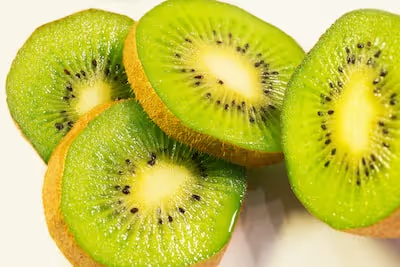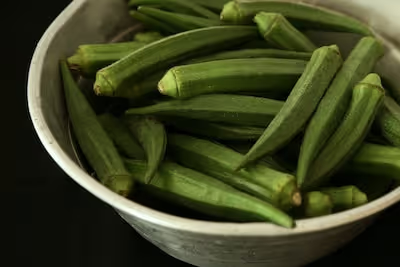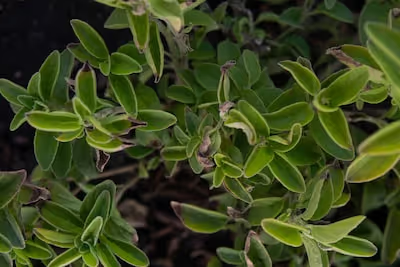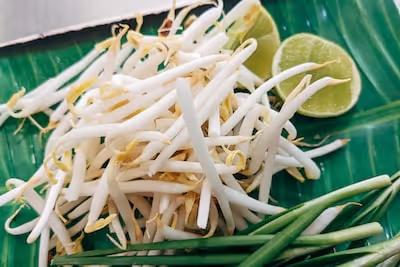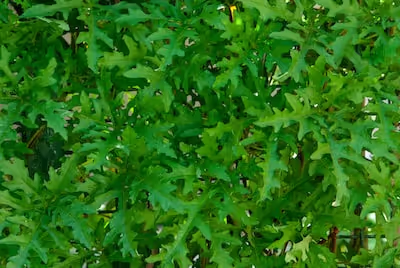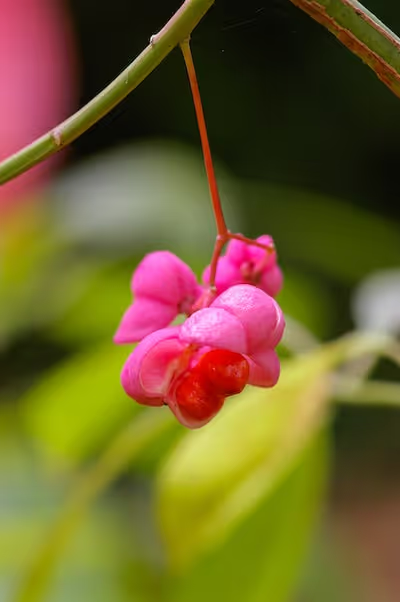Growing Emu Berry at Home: Simple Steps for Success
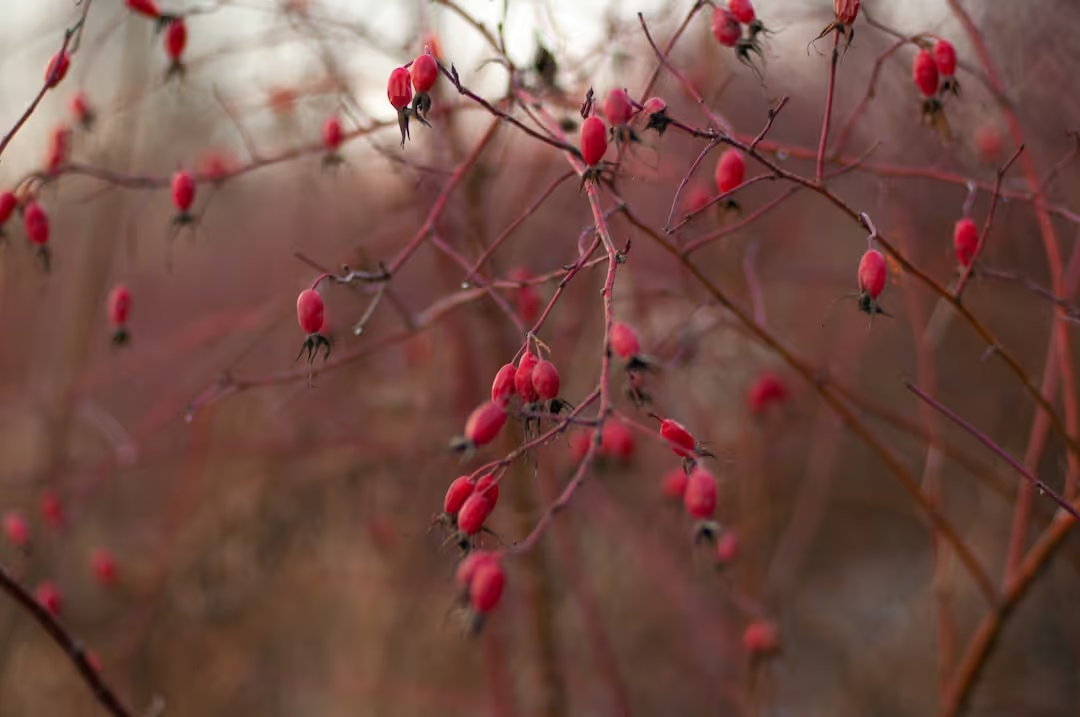
Growing Emu Berry
Growing Emu Berry at home begins with selecting a sunny spot, preparing well-draining soil, and sowing fresh, ripe berries directly. Native to Australia, the Emu Berry (Grewia retusifolia) thrives with minimal fuss, tolerating dry, sandy conditions while rewarding growers with bright, edible fruits. Discover below the simple, satisfying steps for cultivating this resilient, flavorful shrub in your very own backyard.
Cheatsheet: Home-Grown Emu Berry Simplified
🌞 Site & Soil Prep
- Sun: Full sun (6+ hrs daily)
- Soil: Sandy, well-drained, pH 6.0–7.5
- Spacing: 3–5 ft / 1–1.5 m apart
- USDA Zones: 8–11
🌱 Planting & Water
- Start from seed or young plant (recommend: tube stock)
- Plant in early spring or fall
- Water deeply first 6 months, then reduce
- Withstands drought after year 1
🌿 Care & Maintenance
- Mulch: 2 in / 5 cm organic mulch
(keep from trunk) - Prune: Lightly after fruiting for shape
- Fertilize: Low-phosphorus, native blend (spring)
- Watch for root rot; avoid soggy soil
🍇 Harvest & Yield
- Fruiting: Year 2–3
- Yield: Up to 6 lb / 2.7 kg per mature bush
- Pick when dark purple, soft to touch
- Berries high in vitamin C, antioxidants
- Eat fresh, dry, or preserve
🔧 Tools & Products You’ll Need
- Spade or trowel
- Emu berry seeds or tube stock
- Organic mulch
- Low-phosphorus fertilizer
- Mulching shears/pruners
- Watering can or drip system
🌱 Self-Sufficiency Benefits
- One bush supplies a family’s annual snack stash
- Low-maintenance, fits edible landscaping
- Supports local pollinators
- Drought-tolerant: saves water
-
Growing Emu Berry at Home: Simple Steps for Success
I grow two plants sold as Emu berry, the compact shrub Grewia retusifolia and the ground-hugging Muntries, Kunzea pomifera. Both fruit reliably in ordinary suburban yards, both shrug off heat, and both taste like a cross of apple and spice with a hint of resin.
Search intent in a nutshell, you want plants that fruit, fit small spaces, and do not guzzle water. These deliver.
Which “Emu Berry” do you want?
- Grewia retusifolia Emu berry, 3 to 6 ft tall, 0.9 to 1.8 m, upright shrub with small pale flowers and purple to black drupes.
- Kunzea pomifera Muntries or Emu apple, groundcover to 8 in high, 20 cm, spreading 6 to 10 ft, 1.8 to 3 m, with green to red berries on low runners.
Royal Botanic Gardens Victoria lists both as sun lovers with a preference for sharp drainage. Australian National Botanic Gardens notes Muntries handle coastal winds and sandy soils.
Quick specs at a glance
- Sun Full sun for fruit, light afternoon shade inland.
- Soil Free draining sandy loam, pH 6.0 to 7.5 for Grewia, pH 6.0 to 8.5 for Muntries.
- Water Moderate during establishment, then deep, infrequent.
- Cold Light frost ok to about 28 F, minus 2 C, with mulch.
- Heat Established plants ride out 100 to 113 F, 38 to 45 C, if mulched.
- Time to fruit 18 to 36 months from tubestock under good care.
Site and soil prep done right
I aim for a mound or raised bed, 4 to 6 in, 10 to 15 cm, above grade to keep crowns dry. Mix in coarse sand and composted bark, then top with a 2 to 3 in, 5 to 8 cm, woodchip mulch, keeping a bare collar at the stem.
On calcareous sands Muntries romp, on heavier clays I add fine gravel and gypsum for texture. A simple soil pH kit saves time and regrets.
Planting, step by step
- Plant in spring once soil sits above 60 F, 16 C, or early autumn where winters stay mild.
- Space Grewia 3 to 5 ft, 0.9 to 1.5 m, and give Muntries 4 to 6 ft, 1.2 to 1.8 m, to sprawl or drape over a low wall.
- Water in with 2 to 3 gal, 7.5 to 11 L, laced with seaweed extract to settle roots.
- Stake young Grewia for the first windy season, and pin Muntries runners with landscape staples to root along the nodes.
Keep phosphorus low for Australian natives, under 3 percent P on the label, and go slow-release to avoid tip burn.
Watering that builds deep roots
First summer, give 2 to 3 gal, 7.5 to 11 L, once or twice weekly depending on heat and soil. After year one, water deeply every 10 to 14 days in hot spells, then let the surface dry between cycles.
I use a cheap soil probe and aim for moisture around 6 to 8 in, 15 to 20 cm, down. Shallow sips make sulky plants.
Feeding for fruit, not foliage
In spring, broadcast a native plant slow-release with low phosphorus, something around NPK 10-2-7, at label rate. Follow with 0.5 in, 1.2 cm, compost as a top dress, never worked in.
Skip manures high in P, and avoid fresh compost against stems. A light foliar seaweed spray before heatwaves has saved my crop more than once.
Training and pruning
Grewia fruits on young wood, so I tip prune after harvest to a rounded frame with light inside thinning. Keep cuts small and clean, I wipe blades with alcohol between plants.
Muntries can be a mat or a low cordon on a knee-high trellis. I pinch runners at 12 in, 30 cm, to force side shoots that carry more berries.
Pollination and fruit set
Plants can set fruit solo, yields climb with two unrelated plants for cross-pollination. I stagger flowering by mixing tubestock from different nurseries, which spreads risk and bloom window.
Harvest, flavor, and kitchen use
Pick when berries color fully and soften slightly, then chill fast to hold aroma. My Muntries give green-apple snap with cinnamon and eucalypt, Grewia leans jammy and plum-like.
They freeze well, and dehydrate into tart little flavor bombs for granola. I macerate fresh fruit with sugar and lemon overnight, then simmer to 220 F, 104 C, for a quick-set jam.
Propagation that actually works
Cuttings Semi-hardwood tip cuttings 3 to 4 in, 7 to 10 cm, taken late spring, dipped in 0.2 percent IBA, then stuck in 70 percent perlite, 30 percent peat or coir. Bottom heat at 72 to 75 F, 22 to 24 C, roots in 6 to 10 weeks.
Seed Grewia seed benefits from scarification and a 24 hour soak, Muntries seed is slow and variable. I use cuttings for uniform fruit quality.
Containers and small spaces
Muntries excel in bowls and low troughs 18 to 24 in, 45 to 60 cm, wide with native potting mix. Let them spill, then tip prune monthly in the warm season.
Grewia handles a 16 in, 40 cm, pot with a gritty mix and a clay or fabric container that breathes. Water by weight, not calendar.
Climate notes
Hot, dry summers with low humidity suit both species, coastal air is a bonus for Muntries. In frost pockets I throw a breathable cover on forecast nights below 30 F, minus 1 C.
Wind hardens them, waterlogging breaks them. If your winter rain sits in the soil, plant high and mulch wide.
Yield reality
Under irrigation and sun, a mature Muntries patch in my yard gives 4 to 11 lb, 1.8 to 5 kg, per season. A single well-grown Grewia shrub hands me 2 to 6 lb, 0.9 to 2.7 kg, if birds do not beat me to it.
Fruit size swings with crop load, so thin early flushes to boost size later. Netting pushes the numbers up every time.
Pests, diseases, and simple fixes
- Birds and possums Use 15 to 25 mm mesh netting, secured to the ground to stop night raids.
- Scale and sooty mold Treat with horticultural oil at label rate, repeat in 10 days, and improve airflow.
- Root rot The silent killer in heavy soils, fix drainage, plant high, water less often.
- Flower drop in heat Shade cloth at 30 percent during afternoon scorch, water the soil before heat spikes.
Buyer’s guide and how to choose plants
- Buy tubestock grown in native mix, roots white and fibrous, not circling like spaghetti.
- Ask for plants propagated from known, tasty mother stock, especially for Muntries.
- Pick two unrelated plants for better set, label them so you remember who is who.
- Grab a low-P native slow-release and a bale of chunky mulch in the same trip.
My field notes, hard-earned
I planted Grewia in a brutal west-facing strip by a driveway, then watched it flower through 109 F, 43 C, with only a deep soak every 12 days. It fruited while the rosemary sulked.
Muntries in a 24 in, 60 cm, bowl on the patio gave berries at toddler height, a fine test of patience, and better than candy. Birds figured it out on week two, so I net early now.
Step-by-step, the 10 minute weekly routine
- Check soil 2 knuckles deep, water only if dry below the mulch.
- Lift netting, harvest ripe fruit, then re-secure the edges.
- Tip prune soft shoots, 1 to 2 in, 2.5 to 5 cm, to keep fruiting wood coming.
- Scout for scale under leaves and along stems, wipe off small patches.
- Top up mulch where you see bare soil.
Alternatives and companion choices
- Midyim berry Austromyrtus dulcis, sweet speckled berries, partial shade, pairs well with Muntries.
- Riberry Syzygium luehmannii, spicy cherry flavor, great hedge in humid zones.
- Desert lime Citrus glauca, punchy rind for drinks and marmalade, tough as nails in heat.
- Native thyme Prostanthera incisa, floral-minty leaves, draws pollinators to the Emu berry patch.
Troubleshooting quick answers
Leaves yellowing and veined green points to phosphorus burn or wet feet, flush the pot, back off feed, and fix drainage. Sparse fruit means too much shade or a single plant, add sun or a second genotype.
Sprawling Muntries climbing into beds, peg them or prune hard after harvest, they rebound fast. Grewia stem dieback after frost, cut to green wood in spring and mulch deeper next winter.
Why this crop is worth your space
Low-input fruit that tastes like a chef dreamed it up, that is rare. The plants ask for sun, air, and some respect for native nutrient needs, and they pay you back with bowls of berries.
I have cooked Muntries with lamb and charred onions, the fruit holds shape like a good olive but tastes like the bush after rain. Grewia jams glaze cakes with a color that stops conversation.
What credible sources say
Royal Botanic Gardens Victoria describes Kunzea pomifera as a groundcover for sandy, well-drained soils with good sun, ideal for coastal gardens. Australian National Botanic Gardens profiles its edible fruit and notes traditional use by Aboriginal communities.
AgriFutures Australia publishes production notes on Australian native foods that highlight low-phosphorus nutrition and the value of multiple genotypes for yield. State herbarium fact sheets list Grewia retusifolia as a hardy shrub for dry sites with light frost tolerance.
Further reading
- Australian National Botanic Gardens, plant profile for Kunzea pomifera and native food notes
- Royal Botanic Gardens Victoria, Plant Finder entries for Kunzea pomifera and Grewia retusifolia
- AgriFutures Australia, Australian Native Food Industry background and crop overviews
- State herbarium databases, NSW Flora Online and VicFlora entries for Grewia retusifolia
I chase edible plants that behave well and taste bold. Growing Emu Berry ticks both boxes and adds a bit of wild Australia to a patio pot or a sunny strip by the fence.
Frequently Asked Questions: Cultivating Vibrant Emu Berry at Home
What conditions does emu berry thrive in?
Emu berry flourishes best in well-draining soil, appreciating a spot that bathes in partial to full sunlight. Allow its roots space to breathe—avoid compacted or overly damp earth. Aim for a spot that grants moderate airflow, steering clear of stagnant or overly humid corners.
Can I grow emu berry in a container?
Absolutely. Growing Emu Berry within a pot or container is perfectly viable, provided it's generously sized and boasts drainage holes for vigorous root growth. Select a mix that's rich yet drains comfortably—think a fertile blend of organic compost and sandy loam. Keep it outdoors or on a sunlit patio to nourish its love of light.
How often should I water emu berry plants?
Watering should be regular yet measured; Emu berry thrives best when the soil surface dries slightly between sips. Avoid soggy toes—overwatering invites fungal woes. Check the moisture by pressing a knuckle down into the earth; if it's dry beneath the surface, offer a thorough but gentle soak.
What kind of fertilizer best supports emu berry growth?
Opt for a balanced, slow-release fertilizer, rich in nitrogen and phosphorous to invigorate the Emu berry’s healthy foliage and vibrant berries. Supplement this occasionally with organic compost tea or worm castings, allowing nutrients to enrich the root system and vitalize growth naturally.
Does emu berry need regular pruning?
Pruning lightly throughout the growing season encourages compact, attractive form and stimulates healthy berry production. Early spring is ideal—a quick snip of any damaged or weak branches awakens vibrant new growth. Remember, a purposeful trim sharpens vitality and fosters aesthetic elegance in your plant.
Is emu berry plant tolerant to pests and diseases?
Graced with resilience, Emu berry typically brushes off most pest invasions. However, vigilance rewards those attentive to aphids or mites—particularly in drier climates. Spotting unwanted visitors early and treating promptly with insecticidal soap or neem oil usually restores harmony swiftly.
When is the right time to harvest emu berries?
Berries ripen primarily during late spring and early summer, transitioning from vibrant greens to rich purples. Pluck gently yet decisively, ensuring fruit is ripe but firm. Harvest regularly to encourage prolific berry production and savor your reward straight from the plant.
Growing Emu Berry is about patience, respect for the land, and a bit of grit. Give these shrubs the right light, soil, and water, and they’ll reward you with jewel-like berries that taste as wild as they look. Prune with care, keep weeds at bay, and you’ll have a plant that thrives season after season. If you’re after another rugged native for your patch, salal is worth a look too. But for those who stick with emu berry, there’s nothing quite like harvesting these fruits under a big sky, knowing your hands made it happen. That’s the beauty of growing emu berry: simple steps, honest rewards, and flavor you just can’t buy at the store.
The Homesteader's Take: Sustainable Emu Berry Cultivation
Home Remedies and Self-Sufficiency Uses
- Use dried emu berry leaves brewed in tea for digestive aid and mild analgesic effects.
- Fruits rich in vitamin C and antioxidants support immune health and natural wellness.
- Infuse berries in vinegar for homemade salad dressings with nutritional boost.
Livestock-Friendly Growth
- Safe plant for chickens; berries supplement poultry diets and improve egg quality.
- Drought-tolerant shrub suitable as shaded forage boundary for goats and small livestock pens.
Sustainable Soil Improvement Practices
- Plant shallow-rooted emu berry among deeper-rooted crops for natural soil aeration and moisture retention.
- Mulch fallen leaves to enrich soil humus and minimalize watering needs.
Home-Grown Pest Control
- Natural resistance to aphids and mites reduces reliance on chemical insecticides.
- Companion plant alongside vegetables and herbs to repel common pests and enhance biodiversity.
Harvesting and Storage Essentials
- Pick ripe berries promptly, rinse gently, air-dry, and preserve by freezing or dehydrating for year-round use.
- Store dried fruits in airtight jars placed in cool, dark pantries for up to 12 months.
Find out which plants will thrive in your garden!
Answer a few fun questions and get custom plant recommendations perfect for your space. Let’s grow something amazing together!

start your season
